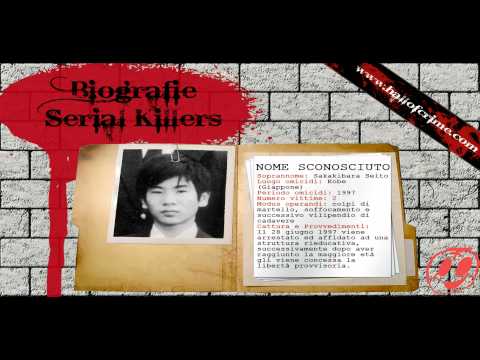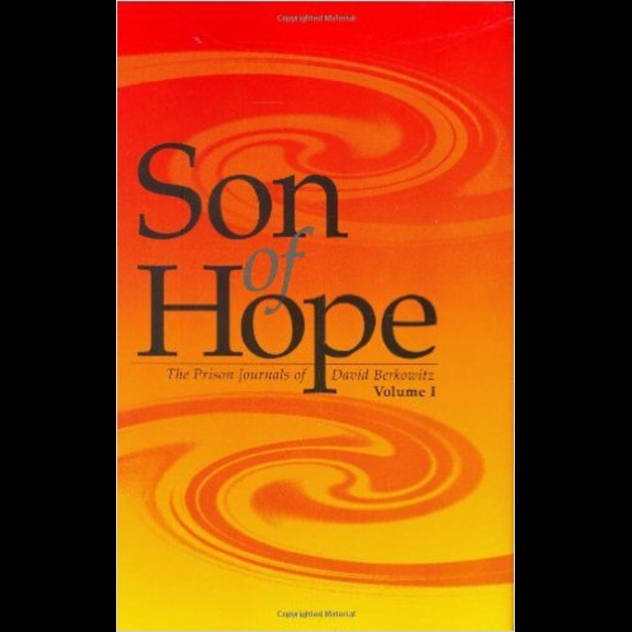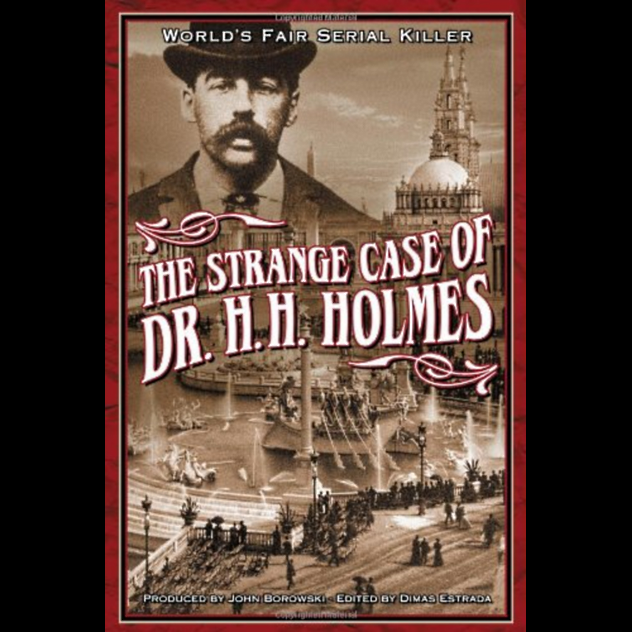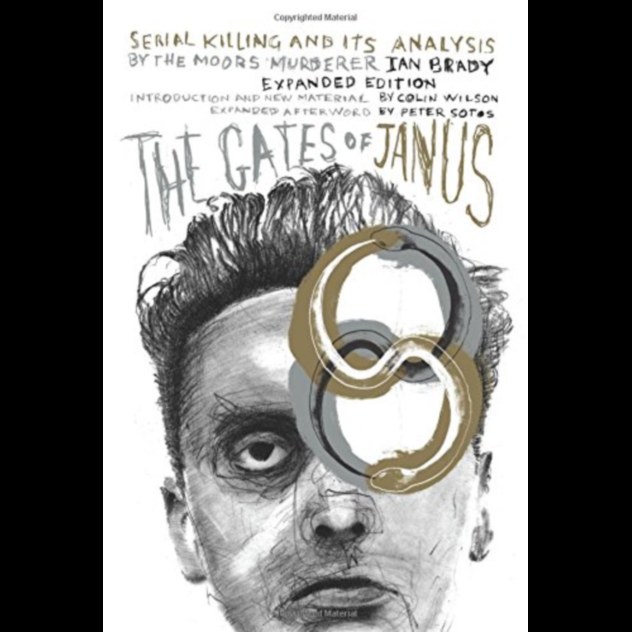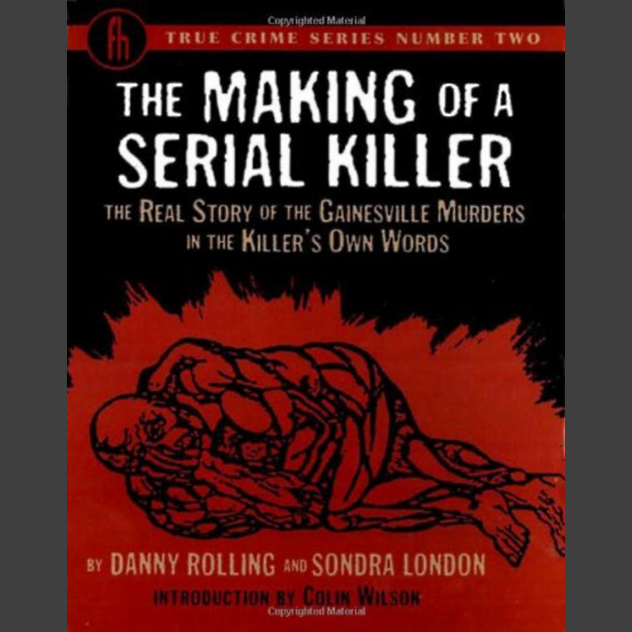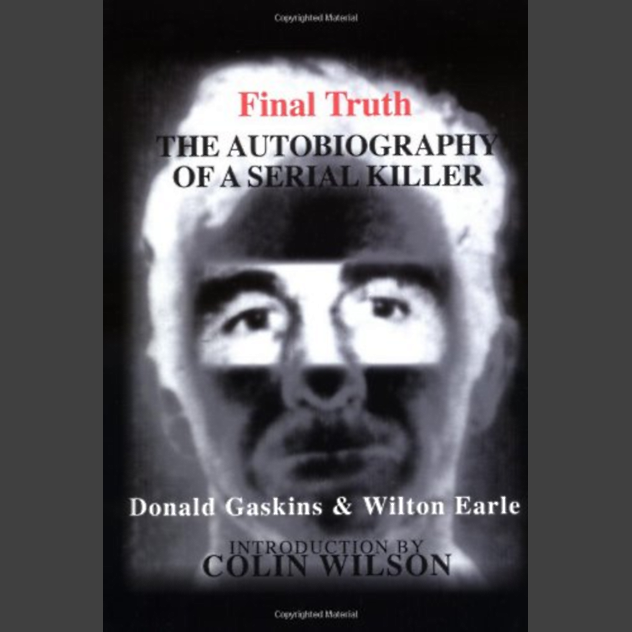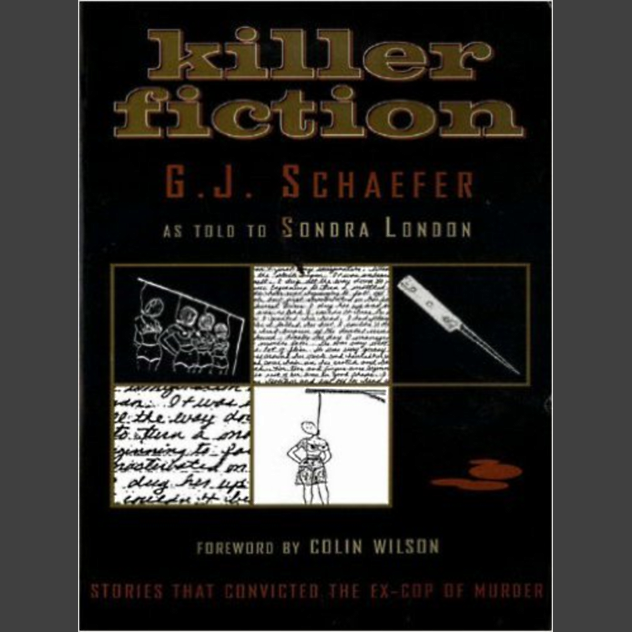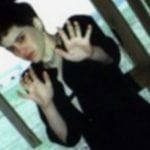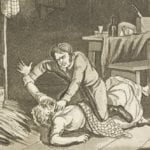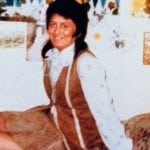In 1997 the first “Son of Sam Law” was passed in New York, and today, more than 40 states have such laws. It was passed after reports circulated that serial killer David Berkowitz, also known as Son of Sam, was offered a huge amount of money for the rights of his story. The law prohibits an accused or convicted criminal to profit from any work detailing his or her crimes. Instead, the money obtained from any such work will reimburse the victims or their families. Nevertheless, even if they are deprived of financial gain, serial killers are free to profit from the attention they get from writing a book. As controversial as such books may be, it is undeniable that they offer a unique look into the clockwork of a serial killer’s mind.
10 Zekka2015
Sakakibara Seito is the alias of a Japanese juvenile serial killer who killed two children and wounded three others in 1997. He was only 14 years old when he was arrested for the murder of 11-year-old Jun Hase, whose severed head he placed before the entrance of a school in Kobe. After his arrest, he also confessed to the murder of Ayaka Yamashita, age 10. In 2004, he was released on a provisional basis, and in 2005, he was fully released. His real name is still unknown to the general public. Seito’s autobiography, Zekka, faced controversy from the start. The book was launched without informing the families of the victims beforehand. Seito reportedly sent copies of the book to his victims’ families with a note of apology inside. In his autobiography, the author admitted to being a sexual deviant as a teenager. When he advanced to junior high school, he had already become bored with killing cats, and it wasn’t long until he started murdering people. In spite of the fact that Mamoru Hase, the father of Jun Hase, has stated that the book only prolongs their suffering and publicly expressed his wish for it to be withdrawn, the project did not cease. On top of that, Seito receive royalties for sales of the book. However, he’s stated that he will use the royalties to pay off civil damages awarded to the victim’s families, which amount to $1.6 million.
9 The Trinity Of Superkidds2010
Charles Kembo was convicted of killing four people (his wife, business partner, girlfriend, and stepdaughter) from 2002–05. In 2003, his wife Margaret went missing, and her body was never found. Ardon Samuel, his business partner, was found strangled and castrated in a Vancouver park in November 2003. Next, almost a year later, his girlfriend Sui Yin Ma’s body was found in a hockey bag in Richmond. His stepdaughter Rita Yeung’s corpse was found last in July 2005, wrapped in garbage bags and dumped in Richmond. She was 20 years old. A few days after this gruesome find, Charles Kembo was arrested. He is still in prison today, serving a life sentence.
8 Son Of Hope2006
David Berkowitz is an American serial killer who killed six people and wounded seven over the span of 14 months, from July 1976 to August 1977. Berkowitz only worked at night and usually targeted women with long, dark hair and couples in vehicles. Many women dyed their hair blond, cut it short, or wore it tied up during the Summer of Sam in 1977. His weapon of choice was a .44-caliber gun which earned him the nickname “the .44-caliber killer.” Of course, he is primarily known as Son of Sam, as he called himself in a letter written to the police. The letter began: Hello from the gutters of NYC which are filled with dog manure, vomit, stale wine, urine and blood. Hello from the sewers of NYC which swallow up these delicacies when they are washed away by the sweeper trucks. Berkowitz’s downfall was a parking ticket that he received near his latest crime scene. After pleading guilty to the murders, he received six life sentences and is currently incarcerated at Sullivan Correctional Facility in Fallsburg, New York. According to Berkowitz, he was driven to murder by the devil. He received messages from his neighbor’s dog, called Sam, as well as through various visual and auditory hallucinations. Although he had a brief brush with a Satanist cult during his adolescence, he claims that he felt the presence of dark forces even in his childhood. However, the Son of Sam found a new father and became the “Son of Hope.” During his imprisonment, he found refuge and freedom in God. His book, Son of Hope, contains his prison journals, in which he describes life behind bars and shares his rebirth into Christianity. David does not profit from the sales of his book, and a portion of the proceeds from each book sold goes to the victims of his crimes.
7 The Strange Case Of Dr. H.H. Holmes2005
Although he was first believed to have been only a swindler, Herman Mudgett, aka Dr. H.H. Holmes, went down in history as one of the first serial killers in the US. While he admitted to killing 27 people, many believe that the body count could be as high as 200. On March 9, 1896, he was sentenced to death and was hanged on May 7. After moving to Chicago, Mudgett bought an entire city block, which he renovated and turned into a hotel that became his “murder castle” at 63rd and Wallace streets. He opened just before 1893 World’s Fair. This was no ordinary hotel; it was built for murder. There were several rooms without windows (which could be locked from the outside), hallways that led to dead ends, staircases that led to nowhere, doors without rooms, and rooms without doors. On top of all that, the walls had built-in gas jets, there was a wooden disposal chute, and the basement housed a person-sized kiln. A room on the third floor was padded to muffle sound, and it had a gas pipe to asphyxiate the inhabitants. The bodies were transported to the cellar through a hidden shaft. Behind a fake wall in the cellar, police found a butcher’s table, bones, bloody clothing, and a crematory. They found women’s belongings in the oven. The World’s Fair had brought a lot of people to Mudget’s hotel, mostly young women. The Strange Case of Dr. H.H. Holmes contains three illustrated primary source books and, most importantly, Mudgett’s confessions, which were published shortly before his execution. Holmes’ Own Story (1895) is the autobiography of Herman W. Mudgett, where he describes his childhood and the hardships he encountered throughout his life. You can also read The Confession of H.H. Holmes (1896), in which he writes his confession.
6 The Gates Of Janus2001
Ian Brady is half of the murdering duo that went down in history for the Moors Murders in Manchester. While Ian Brady and his partner Myra Hindley were committed in 1966 for the murder of three children, they later confessed to another two killings. Their victims ranged in age from 10–17 years old, and some of them were raped. At least three of the victims were buried on Saddleworth Moor. A call to the police from Myra’s brother-in-law, David Smith, ended the Moors Murders. Ian Brady and Myra Hindley wanted to add another member to their duo, but David Smith did not believe that Brady would be capable of murder. Brady proved him wrong by killing Edward Evans with 14 hatchet blows and then strangling him. During their search, the police found Evans’s body and the murder weapon. Another search, a couple of days later, revealed two luggage tickets for Manchester Central Station. Two suitcases found there held nude photographs of one of their victims and tape recordings of her pleading for her life while being abused. Also, there were several photographs of Saddleworth Moor, which lead police to another victim’s body. In The Gates of Janus, Brady aims to take the reader into the mind of a serial killer and explain its clockwork. He tries to convince the readers that serial killers have greater insight into the way they function. Brady presents his theory about the genesis of the modern-day serial killer and also serves several profiles of famous serial killers like Ted Bundy and John Wayne Gacy.
5 The Making Of A Serial Killer1996
Florida’s most notorious serial killer since Ted Bundy, Danny Rolling killed five college students in 1990. He arrived in Gainesville shortly before the start of the fall semester at the University of Florida and pitched a tent in the woods near campus. He stabbed four women and one man and also raped some of his victims. Perhaps the most macabre aspect of his 48-hour killing spree was the way that he positioned the corpse of one of his victims. The body of Christa Hoyt was found posed in a sitting position with her severed head placed on a shelf. In 1994, after pleading guilty, he was convicted of murdering five people and sentenced to death. Although Rolling also confessed to killing three more people in his hometown of Shreveport, Louisiana, during November 1989, he was never tried for these crimes. He was put to death by lethal injection. According to witnesses, before the drug was administered, he sang a hymn-like song. The Making of a Serial Killer was written by Rollings while in prison in collaboration with his former fiancee, Sondra London. Published in 1996, the graphic book is filled with disturbing pictures and stories. In one of these, Rolling describes raping a woman in Sarasota. Next year, London and Rolling were sued by the state for profits made from selling the killer’s story. They were charged as being in violation of Florida’s Son of Sam Law. In 1999, London was ordered to give the families of the victims $15,000, although they were reluctant to take the “blood money.”
4 A Question Of Doubt1993
One of the most notorious serial killers ever, John Wayne Gacy is known to have killed 33 people with ages ranging from 9 to 20. In 1968, Gacy was arrested for sodomy, but he only served 18 months out of the 10-year sentence, on account of good behavior. After being released, Gacy later moved to Chicago, where he became a successful building contractor and was fully immersed in the social life of the city. He was active in politics and appeared as “Pogo the Clown” at children’s parties and charity events. He also started killing. While some of his victims were from his circle of friends and employees, he mostly searched the streets for runaways and hustlers. Gacy was quite inventive when it came to luring his victims to his house and employed several tactics. Sometimes, he would pose as a police officer and “arrest” his victims. Other times, he would just invite them home for drinks. Once they were in Gacy’s home, he would handcuff the victims under the guise of performing a magic trick, after which he tortured and raped them. He then strangled them and buried the bodies in the crawl space under his house. In his later years, he had to find another method to dispose of the bodies since the crawl space was filled, so he dumped the bodies in a nearby river. Some of his victims survived, but even after one of them, Jeffrey Rignall, called the police, the case dragged on. Ultimately, Gacy was caught when police went to his house to inquire about the disappearance of Robert Piest, a 15-year-old looking to get hired. The police officers were hit by the smell coming from the crawl space. Twenty-eight bodies were uncovered on his property and five more from nearby rivers. He was convicted in 1980, and in 1994, he was put to death by lethal injection. In his book, A Question of Doubt, upon which he collaborated with Shane Bugbee, Gacy claims that other parties were responsible for the corpses found underneath his house. As he says in the preface: This is not an autobiography covering my entire life, but a detailed account of the nightmare I lived from December 11, 1978, until March 13, 1980. This is the history of the concoction of lies and calculated deceit created by the police and the news media . . . The book is now out of print; only around 500 copies were published in 1993. There was a play based on the book, called 33: A Question of Doubt.
3 Final Truth1993
Better known as Pee Wee Gaskins due to his 163-centimeter (5’4″) height (or as the “Meanest Man in America”), Donald Gaskins was a prolific American serial killer. He confessed to killing 13 people by various methods including drowning, stabbing, and shooting and then burying the bodies in backwoods graves near Prospect, South Carolina. The true number of his victims is uncertain, but after being arrested in 1975, he was found guilty for eight murders. However, in his autobiography, he claims to have killed as many as 110. Among his victims was also a toddler whom he raped before murdering. In 1991, he died on the electric chair for murdering a fellow inmate, Rudolph Tyner. The son of one of Tyner’s victims had hired Gaskins to kill him. Gaskins gave Tyner a bomb disguised as a radio. The bomb exploded as Tyner put the “radio” close to his ears. Gaskins’s Final Truth: The Autobiography of a Serial Killer was written in collaboration with Wilton Earle. In the pages of his book, the serial killer presents his life and describes his crimes.
2 Killer Fiction1990
While G.J. Schaefer was only convicted for two murders, there is clear evidence that he was a serial killer. Although he claimed to have killed more than 80 women, the true number of his victims is unknown and probably will remain so, since he died in 1995. He was killed by a fellow inmate who ran into his cell, cut his throat, and stabbed him in both eyes. In 1973, Schaefer was convicted for the torture and the murder of Susan Place, age 17, and Georgia Jessup, age 16. However, evidence suggests that they were not his only victims. In his letters and jailhouse confessions, he frequently mentioned other murders. During a police search of the home of Schaefer’s mother, where he had a spare bedroom, they uncovered several objects belonging to women who had disappeared. Although some of their skeletal remains were later uncovered, the cause of death could not be identified. In spite of these findings, no other charges were filed. The police search also came across more than 100 pages of writing and drawings depicting mutilations and murders. In 1990, Sondra London published some of Schaefer’s fiction (particularly a story titled “Murder Demons”) in the volume Killer Fiction. The two dated in high school and reconnected years later. While Sondra considers these stories to be art, police and prosecutors beg to differ. They say that there is more fact than fiction in these stories. Schaefer himself seemed to imply this in a letter dated April 9, 1991, stating: What crimes am I supposed to confess? Farmer? Briscolina? What do you think [“Murder Demons”] is? You want confessions but don’t recognize them when I anoint you with them and we’ve just gotten started.
1 Killer1970
According to Carl Panzram, he murdered 21 people, committed thousands of robberies, burglaries, and arsons, and sodomized more than 1,000 men in 30 countries and out at sea. When he was 11 years old, he robbed a neighbor and was sent to the Minnesota State Training School. After that, he spent most of his life in and out of reform schools, jails, and prisons. With the money he collected by robbing the home of William Howard Taft, he bought a yacht, the Akista, on which he killed 10 passengers after robbing and sodomizing them. He used to hire sailors, whom he would get drunk and sodomize once they were at sea. Then, he would shoot them in the head with a .45-caliber Colt automatic, tie a rock to the corpses, and drop them overboard. Panzram met a prison guard, Henry Lesser, at the Washington Asylum and Jail, where he was sent after being arrested for burglary. The prison guard pitied Panzram after he suffered a beating by his fellow inmates. Heeding Lesser’s advice to write, Panzram gave him the manuscript of his autobiography and continued to send him letters and manuscripts over the years, even after he was transferred to another prison. Killer: A Journal of Murder, by Thomas E. Gaddis and James Long, contains Carl Panzram’s journal and letters. Although the texts were written starting in 1928, it would take more than 40 years for them to be published.
